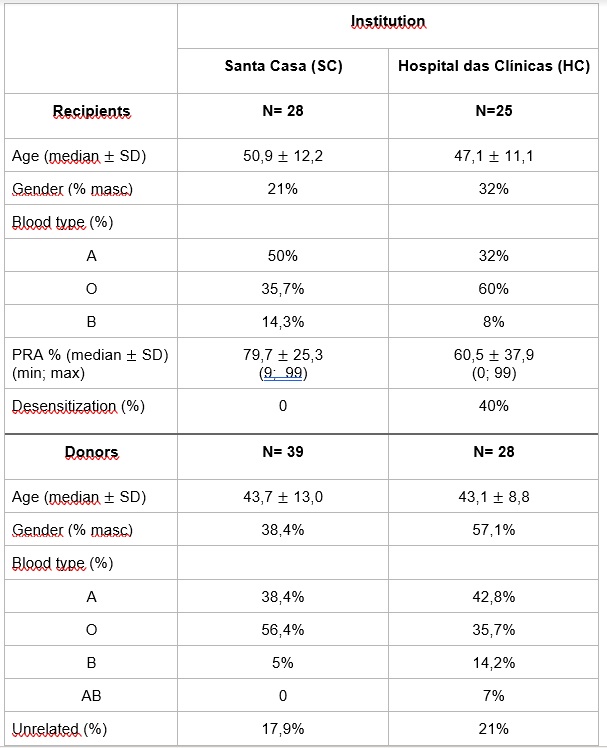
Raising the potential of transplantation with a KPD collaborative program
Juliana Bastos1, David JB Machado PHD2, Gustavo F Ferreira PHD1, Thais Freesz1, Helcio Rodrigues2, Renata P Souza2, Raquel Moreira2, Alexandre A Pires1, Vinicius S Colares PHD1, Camila M Assunção1, Elias David-Neto PHD2.
1Transplant Unit, Santa Casa de Misericórdia, Juiz de Fora, Brazil; 2Kidney Transpant Service, Hospital das Clínicas de Universidade de São Paulo, São Paulo, Brazil
Purpose: Up to 30% of potential living donor/recipient pairs cannot proceed to live donor kidney transplantation (LDKT) for immunological reasons (ABO incompatibility or positive crossmatch). Kidney Paired Donation (KPD) programs have been conducted in various countries for over 20 years as an alternative for these patients. Our goal was to estimate the potential of paired transplantation when increasing the pool of pairs by collaboration between 2 centers in Brazil.
Methods: We conducted simulated match-runs involving 2 centers: Santa Casa de Misericórdia de Juiz de Fora (SC) and Hospital das Clínicas da Universidade de São Paulo (HC). At SC, all the contraindicated donor-recipient pairs because of a positive crossmatch between January 2013 - February 2022 and whose recipients are still on the waitlist were included (N= 28 recipients and 39 donors). At HC, the pool is composed of pairs enrolled in a KPD study protocol that already performed its first paired transplant in March 2020 (N= 25 recipients and 28 donors). We used the StanfordKPD platform to optimize transplant numbers favoring high PRA recipients matches. Four acceptable ranges of DSAs MFI were established (<500, <1500, <3000 and <5000), three types of programs (accepting only 2-way exchanges; 2-and-3-way exchanges and N-way exchanges) and we also evaluated the possibility of collaboration between centers.
Results: The demographic data of both pools are shown in Table 1. The results of various KPD match-runs are shown in Table 2. As was expected, the number of transplants increases when allowing longer chains, higher MFI thresholds and collaboration between the centers. Despite the high median PRA in the pool, the StanfordKPD platform was able to find a match for up to 64% of the recipients when allowing MFI <5000. This is especially possible when we combine KPD with desensitization.


Conclusions: A KPD program can enable kidney transplant for hard-to-match patients, that tend to accumulate on the waitlist. The probability of finding a match rises with the increase of the pool of pairs and the flexibilization of the acceptance criteria.

right-click to download
